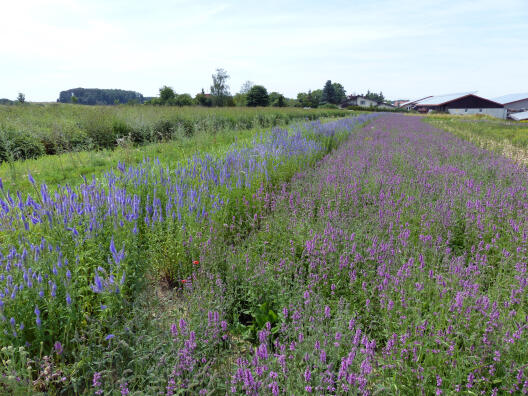Project

© R. Nagel One of the main issues in the current conservation science is whether organisms will be able to adapt to the rapidly changing environment. This is especially valid for plants, because their ability to migrate is limited. To predict plant adaptation, we need to understand contemporary evolution. We have relatively good knowledge on rapid evolution of several model plants, but for a general picture, we need information across large number of non-model plant species.
In this project we focus on rapid evolution in 20 common grassland species. We take advantage of German system of native plant cultivation for seeds for ecosystem restoration projects. Seeds of many native species are collected in wild populations, sown to monoculture on a specialized farms and harvested seeds are then partly sold, partly used for establishing the next generation cultivation. The process is repeated over five consecutive generations. In the cultivation, the wild plants face novel environment and they likely adapt to it. Propagation of seeds for restoration purposes thus represents an unintended large scale evolutionary experiment.
We use seeds stored in an archive of a seed producing company. We will grow plants from seeds of five consecutive generations (from wild collections to fourth cultivation generation) in a common garden, side by side. As these plants all experience the same environmental conditions, this allows us to compare heritable phenotypes, and thus to infer evolutionary changes that may have taken place across generations. Specifically, we (1) assess and compare the magnitude and strength of evolutionary changes after transfer to the novel environment (cultivation) across many species, (2) test whether similar selection pressures lead to the selection of similar phenotypes and (3) test, across multiple species, whether there are general evolutionary trade-offs between selection in cultivation and important adaptations to other environments, in particular tolerance to biotic and abiotic stress. To address the goals, we will use a series of common garden experiments and analysis of molecular markers.
Overall, the project allows to assess the evolutionary potential and speed of evolution in many native wild grassland species which is both important for a basic understanding of rapid evolution and at the same time relevant for conservation management strategies. Furthermore the project will potentially identify critical steps and trade-offs in the cultivation of wild species.
Info
- Project duration: 2018 - March 2021
- This poject is funded by the German Research Foundation (DFG).


